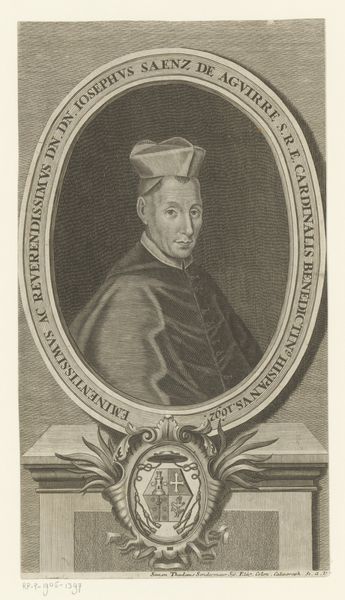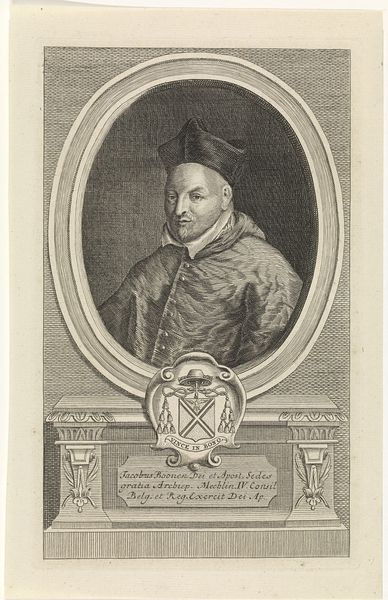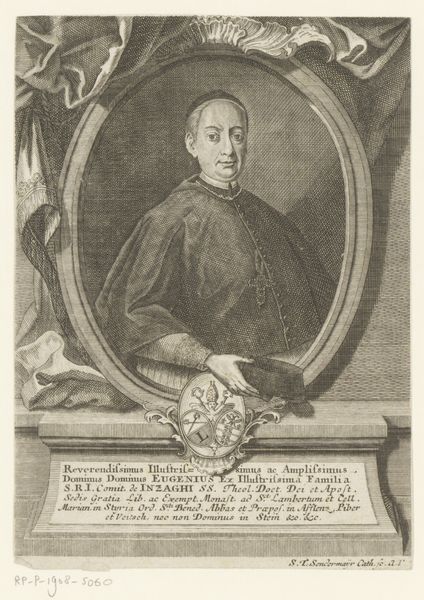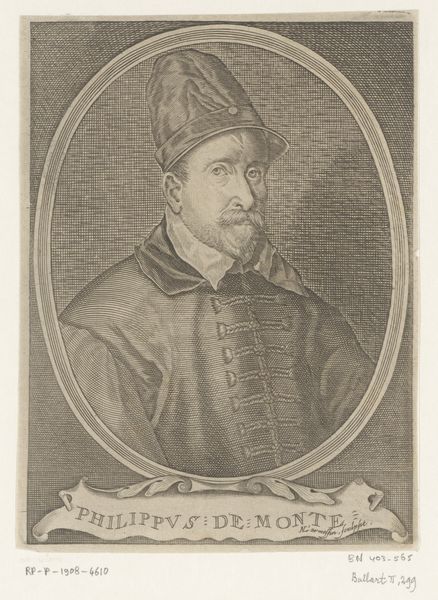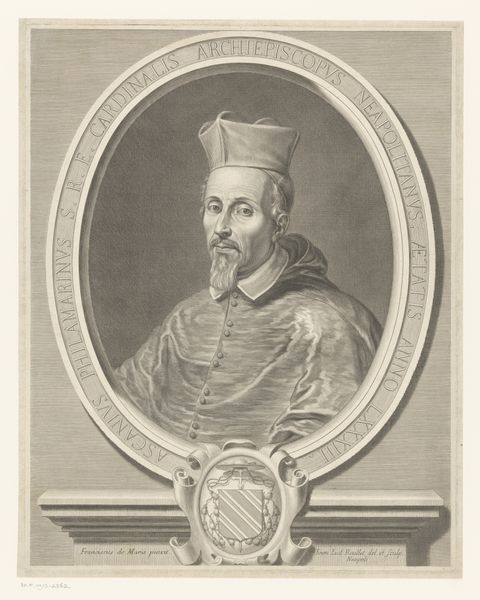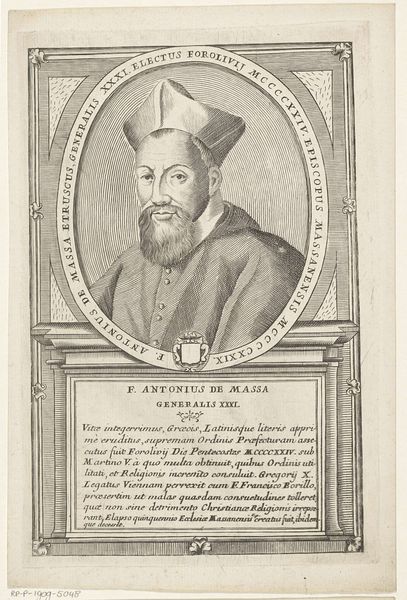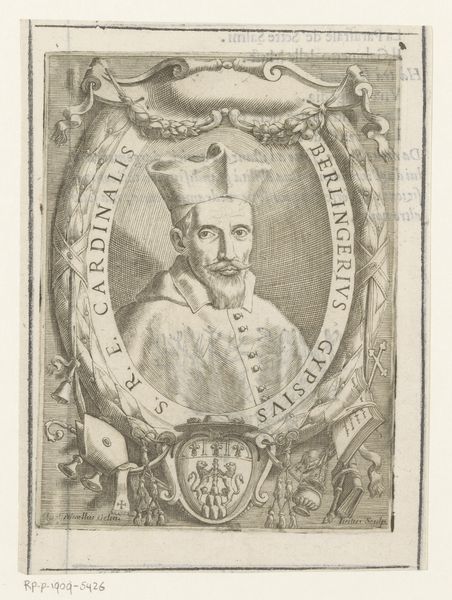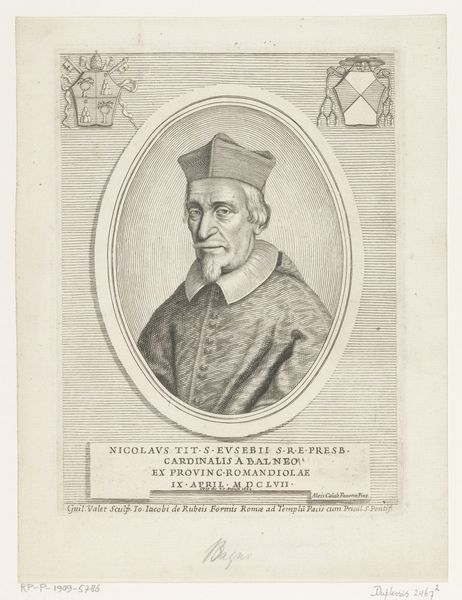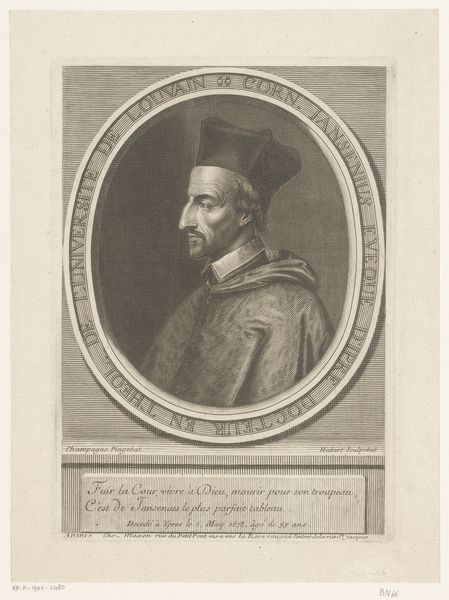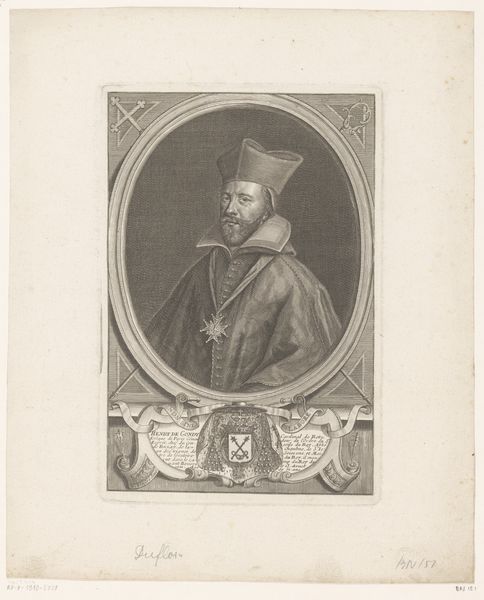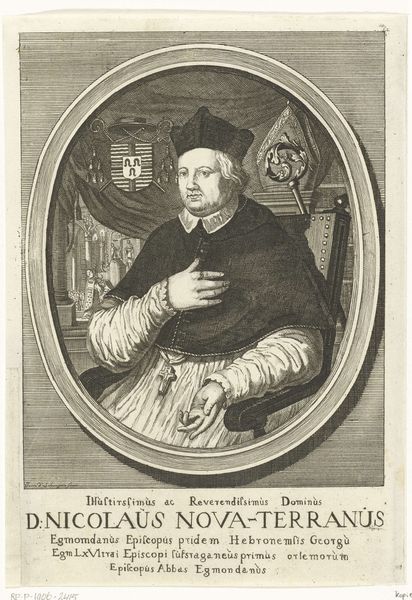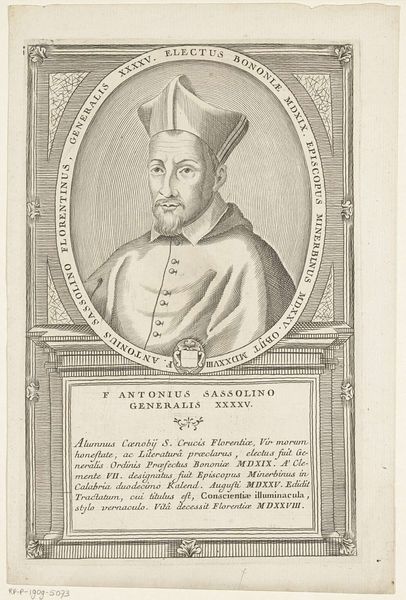
#
pencil drawn
#
light pencil work
#
book
#
pencil sketch
#
old engraving style
#
caricature
#
flower
#
personal sketchbook
#
pen-ink sketch
#
limited contrast and shading
#
pencil work
#
cartoon carciture
Dimensions: height 213 mm, width 146 mm
Copyright: Rijks Museum: Open Domain
Curator: Oh, there's something so immediately compelling about this image. The somewhat severe portrait framed by all those fanciful flowers…it's like a beautiful contradiction. Editor: Indeed. This is a portrait of Angelus, the Cistercian abbot, attributed to Johann Caspar Gutwein, and it was likely created sometime between 1669 and 1730. What strikes me is the layering of power—both secular and religious. Look at the coat of arms beneath the abbot. Curator: Right, a kind of visual claim to authority, very of the era. And yet the face itself, while composed, has this little hint of…melancholy, maybe? Editor: Perhaps. Or the weight of his position, wouldn’t you say? A Cistercian abbot would wield considerable influence. But it’s crucial to recognize how these positions often upheld societal hierarchies, privilege, and exclusion based on gender, class, and even religious background. The floral frame seems to me like an attempt to soften that reality, but does it really? Curator: Well, artifice is often revealing, isn't it? I’m intrigued by the book he holds. Is it open, or closed? What does the text say? I'd like to decipher how this "learned" component adds a further layer to his presentation. The book almost becomes an emblem, too. It echoes the other embellishments that act as performative declarations. Editor: An interesting observation. Consider, too, the larger implications: literacy was limited and unequally distributed, a privilege. So his learnedness underscores this imbalance, even while proclaiming enlightenment. This portrait participates in—and perpetuates—a system where knowledge is a tool for distinction, social control, and authority. And who was it supposed to reach in the first place? Curator: And now, seeing it anew through your interpretation, that melancholy I perceived reads more as self-awareness...a glimpse, perhaps, into the compromises required to maintain power. Or maybe I’m projecting. Either way, the flowers feel even more discordant! Editor: It's this friction that makes it compelling, right? The attempt to reconcile worldly power with spiritual calling. A very human, and very complicated, dance.
Comments
No comments
Be the first to comment and join the conversation on the ultimate creative platform.
